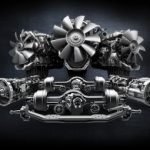Furnishing our future fuel

The fuels of South Africa’s future share an uncomfortable bed with the international technology of today – and this is creating a Catch-22 situation for us. GAVIN MYERS attended the recent Africa Energy Indaba and got a glimpse of what could become this country’s next big controversial issue.
The South African oil industry is desperately looking for cleaner fuels to support the industry. This rather notable point came out at the 2012 Africa Energy Indaba held between February 21 and 23 at the Sandton Convention Centre in Johannesburg.
Officially recognised by the World Energy Council as its African regional event, the Indaba attracted leading global and local energy experts. As an integral (yet dwindling) source of energy, fuel was high on the agenda.
South Africa is currently sitting with a roadmap that outlines the supply of vastly better quality, cleaner fuel by 2017. The Clean Fuels Two (CF2) draft fuel specification and standards document aims to bring the equivalent of Euro-5 emissions standards to South Africa.
But the oil industry has been pushing back, saying the changes refineries will need to make to produce the cleaner fuel are inordinately expensive.
It was up to four men to pump out the pros and cons of this at the conference – Dave Wright, director of corporate planning at Engen Petroleum; Oscar Rivoli, CEO of Fiat Automobiles South Africa; Dr Ken Jennings, MD of K2J Environmental; and Mike Stead, industry and government liaison manager at Engen Oil.
Naturally, various stakeholders with vested interests are involved. The first two are obviously the oil and automotive industries, then there are the environmental players – and government, which is under pressure to get the country catching up with the times. With such varied interests, complications are sure to arise.
“A significant challenge that we’re faced with, to go to Euro-5-behaving fuel, is the size of the investment,” said Stead. “An issue that’s foremost in our minds is how to make these projects viable if we work with current regulated fuel pricing.”
Rivoli, representing the automotive industry, added his concern: “We find ourselves in a situation where we need to undo technology to bring vehicles into the market. This has certain costs, and the consumer won’t be able to enjoy the benefits of the technology to the full. It’s becoming increasingly difficult to source product for this market, and consumers are bearing the added costs.
“While we are moving to Euro-5 engines, which is good news, the rest of the world is advancing at the same time,” he cautioned. “We will only reach Europe’s current level in a few years – and it may not be enough by then.”
This is exacerbated by the plan for the fuels to come in on an introductory basis leading up to the 2017 target date for full implementation, added Wright. This will require parallel supply chains, as is the current situation with 500 and 50 ppm diesel.
“From the oil industry point of view, it’s not an ideal situation,” said Stead. “But the process has been laid to the point where there are vehicles that cannot be brought into the country – so we need to find a solution.”
“One may look at it and see the demand,” added Rivoli, “but the demand is hampered by the lack of distribution.”
Ultimately, said Jennings, in today’s global economy, this will end up affecting us. “There are unintended consequences, one of which is the need to unwind technology in order to take advantage of the fuels sooner rather than later; the aspect of a suitable transition period is not perhaps adequately dealt with.”
The oil industry in particular would bear the brunt of this unwinding of technology. Engen, for example, has already invested significant amounts in the upgrading of its refineries. “If we look at costs in relation to prior investments we’ve made, it is a really a significant portion of the company’s value that you are considering for this particular investment,” said Stead. “Given what we’re currently seeing on primary modules, I don’t see any returns, so we’re really in a Catch-22.”
Consumers, then, might be faced with the costs of bringing the fuels in earlier. But what is the cost to the country whether we do introduce these fuels, or not?
As far as the automotive industry is concerned, said Rivoli, the cost of not having cleaner fuels is that it becomes increasingly difficult to be globally competitive. “The reality is that our volumes are small in this country with low consumption. If one could find efficiency in producing vehicles that are aligned to what the world requires, as opposed to strictly producing vehicles that are suited to local fuels, that would certainly aid in remaining globally competitive.”
Jennings pointed out that the risk shifts to the oil industry, forcing it to adapt at a much more rapid pace without the promise of a return. “Getting there sooner rather than later will cushion this.”
Stead pointed out that the oil industry has been quite involved in trying to quantify the cost in order to justify incentives from government – and the outlook for the economy as a whole was shown to be more positive. “We went to a consultancy that modelled the South African economy and then forced a price increase to reflect the costs of upgrading, then added the
R40 billion we’ve spent upgrading the refineries,” he said. “In doing so, the GDP saw about as big an increase as the investment in the refineries – there was a positive on the economy itself.”
In order to get any of the benefits of new car technology and fuels, the two need to go hand in hand. Here’s hoping government can get this one right.
Published by
Focus on Transport
focusmagsa




